Writing true crime books has it’s ups and downs.
It can be a dark road through hell researching and writing about the terrible things human beings–if some killers can be classified as such–do to other human beings. It also has its rewards, some of them quite unexpected, as I was recently reminded.
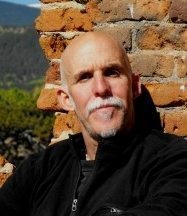
New York Times bestselling author Steve Jackson
Anyone who reads my books knows that I’m not big on going into the gory details, or including the more “shocking” photographs included in other true crime books, that to me aren’t necessary to tell the story. Some of it can’t be avoided, nor should be, but sometimes I feel it only detracts. My interests in these true-life horror tales are for the most part twofold: the psychology of violent crime and killers and their “ripple effect” on victims, including family, friends, law enforcement and the justice system, and society at large; as well as what’s known in the writing business as the hero’s journey, whether it’s a cop, a victim, a witness, a family member, sometimes a defense attorney fighting to make sure the right person is convicted, and the eternal battle between good and evil.
However, whether I write about the details or publish those photographs, my research dictates that I read and see it all. I talk to murderers and hear their sick explanations for their evil actions. I’ve witnessed the terrible toll working these cases can have on law enforcement. And I’ve listened to enough sorrow, seen enough tears, broken spirits and shattered lives of mothers, siblings, spouses, children and parents, to last a life time. All of which can be psychologically and emotionally tough to deal with as a writer. So from time to time I’ve even had to step away from true crime, write about other topics and remind myself that in spite of some of the monsters, it is still a big, beautiful world filled with love, joy and good people.
There are also those days you hear from someone who believes you shouldn’t have written about a particularly subject, or that your approach was wrong, or you’ve invaded someone’s privacy, or that you’re simply the worst writer who ever dared type out a story. Sometimes these criticisms are heartfelt and genuine and I can respect that even if I don’t agree with the opinion or reasoning. Sometimes they are self-serving, disingenuous, or misguided. Often the attacks are personal in nature and/or threatening in one form or another. I had one killer write a letter to me in which he called me “the devil’s typesetter” (one of my favorite pieces of “fan mail” ever). More recently, I had one young woman stop by my author Facebook page just long enough to tell me that she’s read my books, isn’t a fan, and “won’t be reading any more.” I’m surprised she didn’t ask for her money back. But that’s the subjective nature of writing and it goes with the territory; some will like what you do, some won’t.
On the other hand, there also many rewards for writing about crime and criminals and the people they effect. Some of the rewards are easy to determine, others are more subliminal.
Obviously, writing true crime is part of how I make my living, though fortunately I also write in other genres, and supplement my income in other ways, or the term “starving author” might be more accurate than I’d care to admit. Although true crime readers are among the most loyal and devoted to “their” genre, their numbers are not as large as you’d find with fans of crime fiction or romance or even other non-fiction, such as biography and history.
The traditional publishing houses have cut way back on the number of true crime books they produce (thus part of the genesis of WildBlue Press), but the competition for the attention and hard-earned dollars of true crime fans can be fierce. Sometimes it seems that every newspaper reporter who ever covered a murder trial, as well as a variety of other people who become involved or interested in a case, wants to publish a true crime book–an easier task than ever in these days of self-publishing.
Regardless of the quality of such writing, it does give the true crime devotee a lot to choose from, as does the advent of all the reality crime shows. Sometimes the latter can help with getting the word out about a book, such as the recent Epic Mysteries episode about my new book SMOOTH TALKER: Trail of Death on the Investigation Discovery channel (I’m told the show will re-run in May; in the meantime, here’s the trailer). But like anything else in life there are only so many hours in a day that even the most ardent true crime fan can devote to the subject whether it’s books or television programs. I feel fortunate to earn something back from my work, but it also means to me that readers appreciate what I do and that’s rewarding in itself. You don’t last long in this business if no one wants to read your books.
One of the best rewards for me is when I hear from someone involved in the telling of a story who thanks me for writing the book. It can be a family member of a victim who is grateful that their loved one was remembered, not as a case file but as a real person who had hopes and dreams, and the right to live their life out fully. Combined with that gratitude sometimes is also the feeling of vindication that the murderer who took that person’s life has been exposed for all the world to see, and that justice eventually prevailed.
I also appreciate those times when I’m contacted by people in law enforcement or the justice system who don’t always have the best opinions of journalists or book writers but can respect when they’re treated fairly, or even portrayed heroically. Sometimes it’s just to say thanks for depicting them as human beings who are greatly effected by these traumatic events. Such was the case in my first WildBlue Press book BOGEYMAN, which told the story of the hunt for serial child killer David Penton. It didn’t dwell on the depredations of the killer but instead focused on the tenacious detectives and the impact of the long ordeal on them and even their families.
Whether these calls and emails come from family members or cops or lawyers, I’ve formed a bond with many of the people I write about, and in quite a few cases have established long-lasting friendships that have gone on for years. There is something about dealing with the dark side of human nature that brings together good people who have that experience in common.
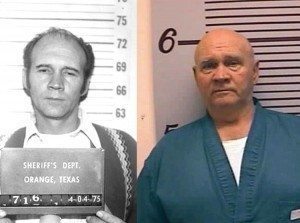
Serial killer Roy Melanson: Then and Now
However, as I hinted at the beginning of this post I recently was fortunate to experience a new first following the publication of my latest true crime SMOOTH TALKER. The book details the story of serial killer Roy Melanson whose rampage of rape and murder spanned nearly three decades before he was finally put in prison for what is hopefully the rest of his life. The storyline focuses on three murders he committed: Anita Andrews and Michele Wallace in 1974, and Charlotte Sauerwin in 1988. Solving the first two took great detective work also portrayed in the book; the third, Sauerwin, focused more on the victim’s fiance, Vince LeJeune, who in spite of Charlotte having been last seen with a stranger became the chief suspect in her murder. So much so that for 22 years, the cloud of suspicion hung above LeJeune’s head, greatly effecting his life as friends and his community turned their backs on him, essentially convicting him without an arrest or trial.
Then in the mid-1980s, Kathy (Young) Ireland began investigating the cold case files of Michele Wallace. No spoiler alert here but her investigation eventually leads to solving not just the Wallace case, but the Andrews case, and removing that cloud of suspicion from over LeJeune’s head in 2011. After my book was published on April 8, and subsequently the Investigation Discovery episode aired on April 9, I received a message from Vince LeJeune, who was interviewed for both. He thanked me for my part in getting the truth out: he did not kill his fiance, all those years he’d been stigmatized, he was an innocent man. And now everyone knew it.
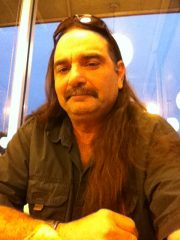
Vince LeJeune in 2015
LeJeune had someone else he wanted to thank, Kathy (Young) Ireland. He has since contacted her, and they plan on talking in the near future.
In the meantime, after LeJeune contacted her via email, Kathy, who is a friend of mine as well, wrote to me to express how “it made me cry as it was so touching and kind.” She was surprised, too, as typically humble, she has always just explained away her incredible work on the Wallace case as “just doing my job.”
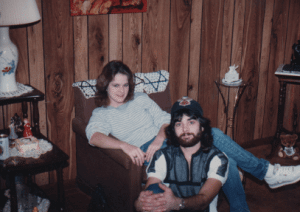
Charlotte Sauerwin and Vince LeJeune planned on building their dream home on the land where Roy Melanson murdered her in 1988
“I just thought, and the evidence told me, that Melanson was a monster and Michele deserved justice,” she wrote to me. “And I didn’t want any more families harmed.” The irony is that Kathy has grown tired of talking about the Melanson case, as well as thinking about him, which has included appearing before the Colorado parole board to argue against any consideration of letting him out. She would have preferred not to participate in the television program, or discuss the case anymore, but she did it because I asked her to.
However, now I got to explain to her why telling the story was important. In the general sense, not only do these “hero’s journeys” assure the public that if there are monsters out there, there are monster-hunters who will not stop until they’re caught. In this particular case, I told her, not only did she bring justice to victims, and prevent an evil man from causing more death and despair, in a very real sense, she saved LeJeune’s life. Without her dogged persistence in the Wallace case, the cloud of suspicion might have never been lifted from over an innocent man’s head. While there is no giving him back those years, he can walk into the future without that terrible weight on him.
Sometimes being a cop, or an author, has rewards you never expect.
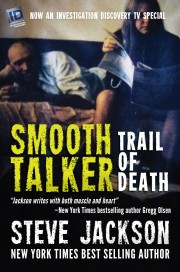
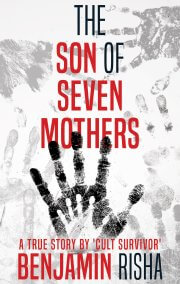

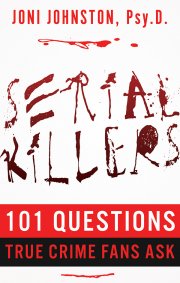
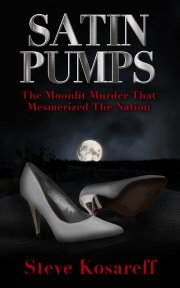
 Join our email list
Join our email list
Leave a Reply